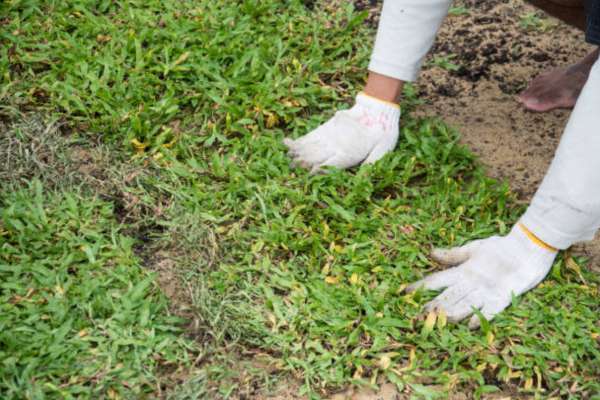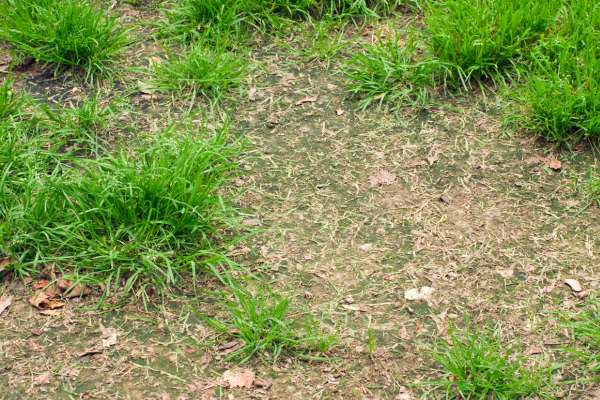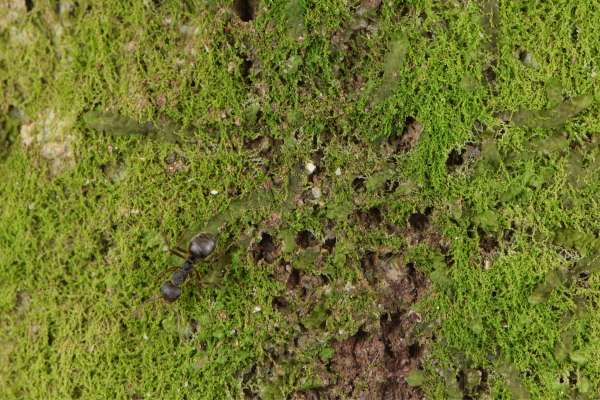Discovering how to get rid of lawn fungus effectively can transform your garden, ensuring a healthier, more vibrant outdoor space. Addressing this common issue not only enhances the aesthetic appeal of your lawn but also contributes to its overall health and resilience. Learning the key strategies to eliminate lawn fungus is crucial for maintaining a lush, green garden. In this article, we’ll explore proven methods to get rid of lawn fungus, delve into the importance of tackling this problem, and uncover the benefits of a fungus-free yard. Join us as we guide you through essential tips and insights to help you achieve a flourishing, fungus-free outdoor oasis.
How Do I Identify Lawn Fungus In My Yard?
Identifying lawn fungus in your yard can be done by observing the appearance of your grass. Look for patches of discolored or dead grass, unusual growth patterns, or spots that appear slimy or fuzzy. Different types of blight may present with varying symptoms such as yellowing, browning, or thinning of the grass blades.
Are There Natural Remedies For Getting Rid Of Lawn Fungus?
Yes, there are several natural remedies that can help get rid of lawn fungus. One effective method is using a mixture of baking soda and water as a fungicide. Simply mix 1 tablespoon of baking soda with 1 gallon of water and spray it on the affected areas of your yard. This solution can help prevent the spread of fungus and promote healthy grass growth.
Choosing Resistant Grass Varieties

Choosing resistant grass varieties is an important first step in preventing and managing yard fungus. Certain grass species are naturally more resistant to fungal infections, making them a smart choice for homeowners looking to maintain a healthy lawn. Varieties such as tall fescue, zoysia, and Bermuda grass have been shown to exhibit greater resistance to common yard fungi, helping to reduce the likelihood of an outbreak.
Neem Oil
One natural and effective method for controlling yard fungus is the application of neem oil. Derived from the seeds of the neem tree (Azadirachta indica), neem oil is renowned for its antifungal properties and has been used for centuries in traditional medicine and agriculture. When applied to affected areas of the lawn, neem oil acts as a potent fungicide, inhibiting the growth and spread of fungal pathogens. Additionally, neem oil is safe for use around pets, wildlife, and beneficial insects, making it an eco-friendly alternative to synthetic chemical fungicides. Incorporating neem oil into your yard care routine can help combat existing fungal infections while also providing long-term protection against future outbreaks.
Types Of Lawn Fungus
1. Brown Patch
Brown Patch is a common lawn fungus characterized by circular patches of brown, dead grass surrounded by a dark ring. This fungus thrives in warm, humid conditions and can quickly spread throughout your yard if left untreated. To combat Brown Patch, it’s important to improve air circulation and reduce moisture levels in your lawn. Additionally, applying fungicides specifically formulated to target Brown Patch can help eradicate the blight and promote healthy grass growth.
2. Dollar Spot
Dollar Spot is another prevalent yard fungus that appears as small, circular patches of bleached grass, resembling silver dollars. This blight typically thrives in warm, humid weather and spreads rapidly in areas with poor soil drainage. To effectively eliminate Dollar Spot, it’s essential to improve soil drainage and promote healthy root development in your grass. Additionally, applying fungicides designed to target Dollar Spot can help prevent further spread and encourage recovery of affected areas.
3. Rust
Rust is a lawn fungus that manifests as yellow or orange-colored spots on grass blades, giving them a rusty appearance. This fungus thrives in damp, cool conditions and can spread quickly during periods of high humidity. To control Rust, it’s important to mow your lawn regularly and avoid excessive nitrogen fertilization, as these practices can exacerbate fungal growth. Applying fungicides labeled for Rust control can also help suppress the spread of the fungus and protect your lawn from further damage.
4. Snow Mold
Snow Mold is a type of lawn fungus that occurs in cold, snowy climates during the winter months. This blight appears as fuzzy, white or pink patches on the grass, often after snow has melted. To prevent Snow Mold, it’s crucial to avoid piling snow on your yard for extended periods and to improve air circulation by pruning overhanging branches and removing thatch buildup. Applying fungicides labeled for Snow Mold prevention in late fall can also help protect your yard from fungal infestations during the winter.
Monitoring Humidity Levels
Monitoring humidity levels is essential for preventing the development of yard fungus. Fungi thrive in warm, humid environments, so keeping humidity levels in check can help reduce the risk of an outbreak. Invest in a hygrometer to measure the humidity levels in your lawn, and take steps to reduce moisture buildup by aerating your soil, avoiding overwatering, and improving air circulation around your grass. By keeping humidity levels within the optimal range, you can create an environment that is less hospitable to fungal growth.
Addressing Poor Drainage Issues

Poor drainage is a common underlying factor that contributes to the development of lawn fungus. When water accumulates on the surface of the lawn or becomes trapped in low-lying areas, it creates an environment conducive to fungal growth and proliferation. To address poor drainage issues, start by identifying areas of your yard where water tends to pool or stagnate after rainfall or irrigation. Implementing corrective measures such as grading the terrain, installing French drains, or incorporating permeable landscaping features can help redirect excess water away from problem areas and improve overall drainage. By ensuring proper water management and addressing drainage issues promptly, you can mitigate the risk of fungal infections and promote a healthier, more resilient yard.
Baking Soda As A Fungicide

Baking soda, a common household item, can be a powerful ally in the fight against treat lawn fungus. Its natural antifungal properties make it an effective and affordable solution for treating various types of fungal infections on plants. When mixed with water and applied to the affected area, baking soda alters the pH balance on plant surfaces, creating an inhospitable environment for fungi to thrive.
Avoiding Overwatering

Overwatering your lawn can create a breeding ground for fungal growth. Excess moisture in the soil creates ideal conditions for fungi to thrive, leading to outbreaks of lawn fungus. To prevent this, it’s important to avoid overwatering your lawn and to water it deeply but infrequently. By allowing the soil to dry out between watering sessions, you can help to discourage the growth of fungus and promote the overall health of your grass. Additionally, be mindful of drainage issues in your yard and address any areas where water tends to accumulate, as these can contribute to fungal problems.
Transitioning To Disease-Resistant Lawns

Transitioning to disease-resistant lawns can be a game-changer for homeowners struggling with persistent lawn blight issues. Rather than constantly applying fungicides and battling outbreaks, transitioning to disease-resistant grass varieties can provide a long-lasting solution. By selecting grass species that are naturally resistant to common fungal diseases, such as brown patch or powdery mildew, homeowners can reduce the need for chemical treatments and enjoy a healthier yard environment.
Recognizing Early Signs Of Fungus

Early detection is key to effectively managing lawn fungus. By recognizing the early signs of fungal infection, you can take swift action to address the problem before it escalates. Common signs of yard fungus include discolored or yellowing patches of grass, thinning turf, and the presence of mold or mildew on the soil surface. Keep a close eye on your yard for any signs of abnormal growth or discoloration, and be proactive in treating suspected fungal infections. Prompt intervention can help to prevent the spread of blight and minimize damage to your lawn.
Implementing A Holistic Approach

Implementing a holistic approach to combat lawn fungus involves more than just applying chemicals. Instead, focus on improving soil health by using organic fertilizers and promoting natural microbial activity. Introducing beneficial insects like ladybugs and nematodes can help control harmful pests without resorting to harsh pesticides. Additionally, considering factors such as proper watering techniques and adequate air circulation can create an environment that is less conducive to fungus growth.
Soil Testing For Nutrient Deficiencies

Soil testing is crucial for identifying and addressing nutrient deficiencies in your lawn or garden. By conducting a soil test, you can determine which nutrients your soil lacks and take targeted measures to improve its fertility. This proactive approach not only ensures healthier plant growth but also helps prevent issues like yard fungus, as nutrient-rich soil promotes strong, disease-resistant plants.
Ignoring Early Signs Of Fungus

Ignoring early signs of fungus on your lawn can lead to a full-blown infestation that is much harder to control. By turning a blind eye to those small spots or discolored patches, you are essentially giving the fungus the perfect opportunity to spread rapidly and wreak havoc on your beautiful landscape. Not only can this impact the health and appearance of your yard, but it can also be challenging and costly to eradicate once it has taken hold.
The Final Thought
Getting rid of lawn fungus requires a multifaceted approach that addresses both the symptoms and underlying causes of fungal growth. By incorporating strategies such as using baking soda as a fungicide, avoiding overwatering, transitioning to disease-resistant lawns, and recognizing early signs of fungus, you can effectively manage fungal infections and promote the health and vitality of your lawn. With careful attention to lawn care practices and proactive management of fungal issues, you can enjoy a lush, green yard free from the unsightly effects of yard fungu
